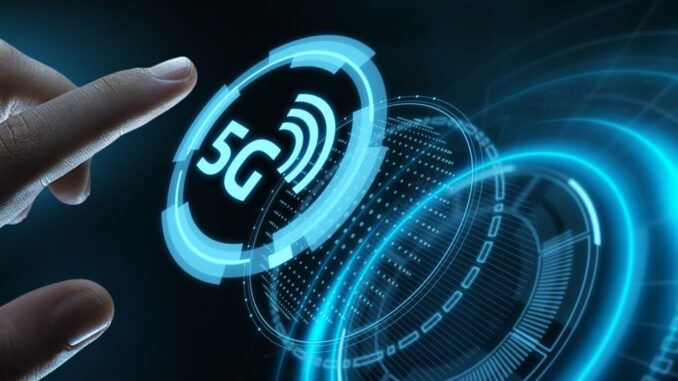
5G technology is playing a pivotal role in transforming remote monitoring and management across various industries, enabling organizations to operate with greater efficiency,
responsiveness, and scalability. Here’s a closer look at how 5G enhances remote monitoring and management: Key Features of 5G for Remote Monitoring and Management







1. **Ultra-Low Latency:**
– **Real-Time Data Transmission:** The reduced latency of 5G (as low as 1 millisecond) allows for instantaneous communication between devices, making it possible for organizations to monitor systems and respond to incidents in real time.
– **Immediate Control Responses:** Latency-sensitive applications, such as remote surgeries or industrial automation, benefit greatly from the ability to react swiftly to changes or anomalies.
2. **High-Speed Connectivity:**
– **Rapid Data Streaming:** 5G supports high data transfer rates, allowing for the quick transmission of large datasets, such as video feeds from surveillance cameras or telemetry data from remote sensors.
– **Scalable Connections:** Organizations can connect numerous devices simultaneously without degrading performance, enhancing monitoring capabilities across vast infrastructures.
3. **Enhanced IoT Capabilities:**
– **Massive Machine-Type Communications (mMTC):** 5G is designed to support a vast number of IoT devices, enabling a wide array of sensors and devices to be connected for comprehensive monitoring.
– **Improved Device Integration:** This capability facilitates the integration of various devices and platforms, allowing for more holistic monitoring and management solutions.
4. **Edge Computing:**
– **Localized Data Processing:** 5G enables edge computing, which allows data to be processed closer to the source rather than sending it back to centralized data centers, reducing lag time and optimizing bandwidth usage.
– **Immediate Decision Making:** With data processed on-site, organizations can make faster, more informed decisions based on real-time insights.
5. **Network Slicing:**
– **Customized Network Experiences:** 5G allows for the creation of virtual networks (slices) optimized for specific applications, ensuring that critical monitoring systems have the bandwidth and reliability they require without interference from other services.
– **Dedicated Resources:** This is particularly useful for industries that need prioritized connectivity for crucial functions, such as healthcare or public safety.
### Benefits of Enhanced Remote Monitoring and Management with 5G
1. **Improved Operational Efficiency:**
– **Predictive Maintenance:** Organizations can utilize real-time data from equipment and machinery to predict failures and schedule maintenance before issues arise, reducing downtime and repair costs.
– **Faster Incident Response:** Instant alerts and monitoring capabilities enable quicker responses to anomalies or emergencies, minimizing potential disruptions.
2. **Greater Visibility and Control:**
– **Comprehensive Monitoring:** Organizations can gain insights from diverse sensors and devices, providing a complete picture of operations and enabling proactive management.
– **Centralized Dashboards:** 5G-enhanced systems can consolidate data from various sources into centralized monitoring dashboards, making it easier for management teams to oversee operations.
3. **Enhanced Safety and Security:**
– **Real-Time Surveillance:** 5G enables continuous, high-definition video feeds from cameras in sensitive areas, improving security and safety protocols.
– **Remote Interventions:** Operators can control equipment remotely in real-time, reducing the need for on-site personnel in hazardous situations.
4. **Scalability:**
– **Easier Expansion:** Organizations can seamlessly add more devices and sensors to their monitoring systems as needed, thanks to 5G’s capability to handle a high volume of connections.
– **Adaptability:** This scalability allows businesses to adjust their monitoring solutions based on changing operational needs or growth.
5. **Cost Savings:**
– **Reduced Infrastructure Costs:** With 5G’s ability to support more devices and applications without requiring additional infrastructure investments, organizations can lower their overall operational costs.
– **Efficiency Gains:** Streamlined monitoring and management processes lead to reduced labor costs and higher productivity.
6. **Enhanced Analytics Capability:**
– **Advanced Data Analytics:** With faster data transfer and processing, organizations can apply advanced analytics and machine learning algorithms to their monitoring data, leading to better insights and decision-making.
– **Actionable Insights:** The ability to collect and analyze real-time data helps organizations identify trends and make informed operational adjustments.
### Applications of 5G in Remote Monitoring and Management
1. **Manufacturing:**
– Remote monitoring of machinery and equipment for predictive maintenance and workflow optimization.
– Real-time tracking of production processes to ensure quality control.
2. **Healthcare:**
– Remote patient monitoring through wearable devices, allowing healthcare professionals to track vital signs in real-time.
– Telemedicine solutions enabled by high-definition video and low-latency communication.
3. **Smart Cities:**
– Real-time monitoring of traffic, waste management, and energy consumption to enhance urban planning and management.
– Improved public safety through connected surveillance and emergency response systems.
4. **Agriculture:**
– Monitoring environmental conditions and crop health through IoT sensors, allowing for better resource management and yield optimization.
– Remote control of farming equipment to enhance operational efficiency.
5. **Energy and Utilities:**
– Remote monitoring of energy grids and distribution networks to enhance reliability and prevent outages.
– Real-time data from smart meters to optimize energy consumption and improve customer service.
### Conclusion
5G technology significantly enhances remote monitoring and management capabilities, fostering improved operational efficiency, safety, and scalability across various industries. By leveraging the advantages of 5G, organizations can implement more effective monitoring systems, enable real-time decision-making, and capitalize on data-driven insights that drive innovation and growth. As 5G networks continue to expand, the potential applications and benefits for remote monitoring will only continue to grow.


Leave a Reply